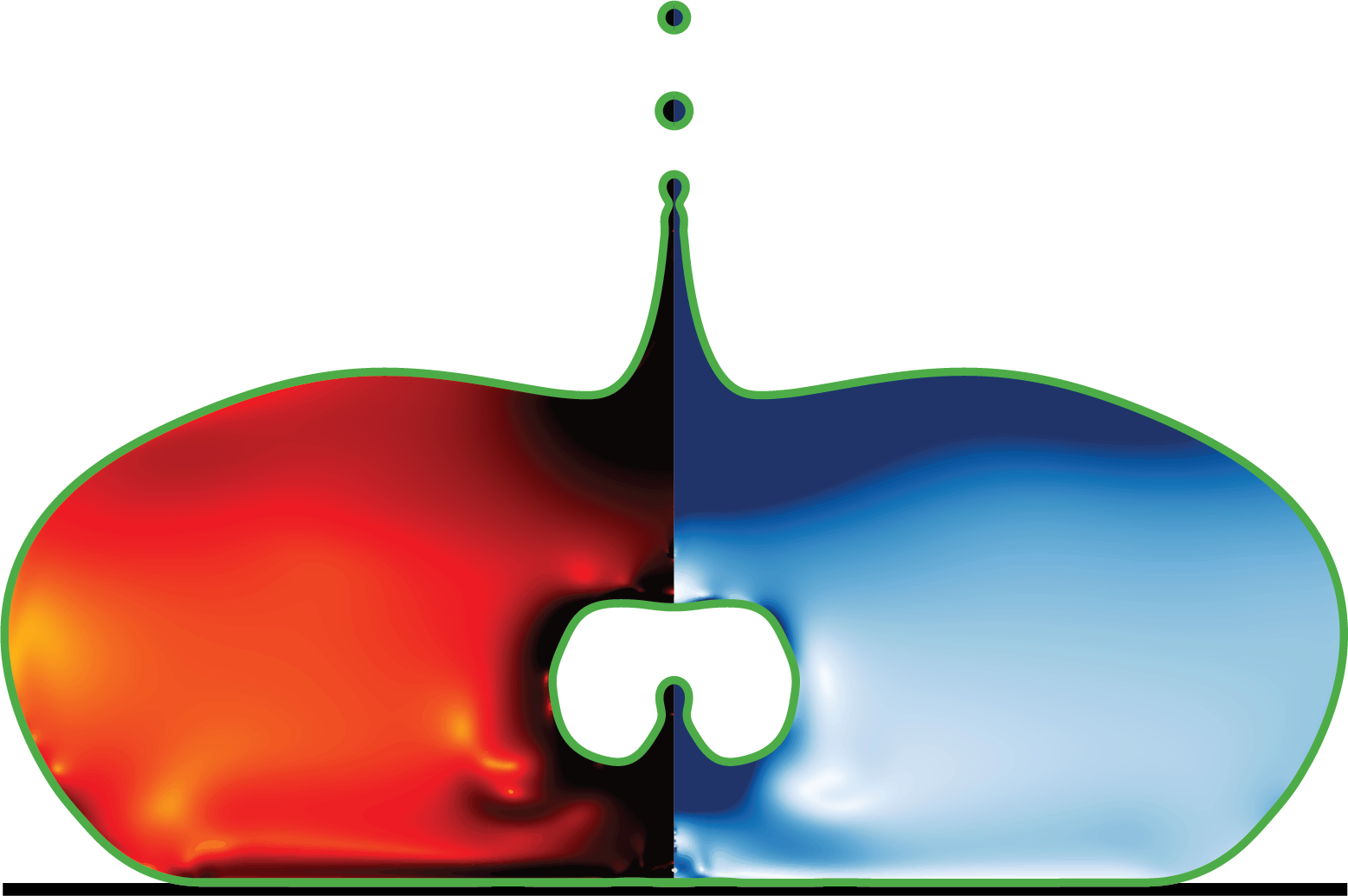postProcess/getFacets3D.c
Facet Output Visualization Tool
This module provides functionality for extracting and outputting interface facets from volume fraction fields in computational fluid dynamics simulations. It is designed to work with the Basilisk C framework for solving partial differential equations on adaptive octree/quadtree grids.
Overview
The tool reads volume fraction data from saved simulation files and extracts the interface geometry using facet reconstruction algorithms. The extracted facets can be visualized or processed for further analysis of multiphase flow interfaces.
Authors
- Vatsal Sanjay ([email protected])
- Physics of Fluids Group
Dependencies
- Basilisk C framework
- Octree grid implementation
- Navier-Stokes centered solver
- Volume fraction utilities
#include "grid/octree.h"
#include "navier-stokes/centered.h"
#include "fractions.h"
scalar f[];
char filename[80];output_facets_v2
Extracts and outputs the facets (interface segments/polygons) from a volume fraction field. This function implements a marching squares/cubes-like algorithm to reconstruct interfaces from volume fraction data.
The function iterates through all grid cells and identifies those containing an interface (where the volume fraction is between 0 and 1). For each interface cell, it: 1. Computes the interface normal using neighboring cell data 2. Calculates the plane constant α for the linear interface approximation 3. Extracts the intersection points between the interface and cell edges 4. Outputs the facet vertices to the specified file
Parameters
c: Volume fraction scalar field containing the interface datafp: Output file pointer for writing facet coordinates (default: stdout)s: Face vector field for surface tension calculations (default: {{-1}})
Output Format
The output format depends on the spatial dimension: - 1D: Single x-coordinate of the interface position - 2D: Line segments as pairs of (x,y) coordinates, blank line separated - 3D: Polygon vertices as (x,y,z) coordinates, blank line separated
Implementation Notes
- Only processes cells with volume fraction in range (1e-6, 1-1e-6) to avoid numerical issues near pure phases
- Uses the PLIC (Piecewise Linear Interface Calculation) method for interface reconstruction
- Facet extraction tolerance is set to 1.1 for robust polygon generation in 3D cases
trace
void output_facets_v2(scalar c, FILE * fp = stdout,
face vector s = {{-1}})
{
foreach()
if (c[] > 1e-6 && c[] < 1. - 1e-6) {
coord n = facet_normal(point, c, s);
double alpha = plane_alpha(c[], n);
#if dimension ==
fprintf(fp, "%g\n", x + Delta*alpha/n.x);
#elif dimension ==
coord segment[2];
if (facets(n, alpha, segment) == 2)
fprintf(fp, "%g %g\n%g %g\n\n",
x + segment[0].x*Delta, y + segment[0].y*Delta,
x + segment[1].x*Delta, y + segment[1].y*Delta);
#else // dimension ==
coord v[12];
int m = facets(n, alpha, v, 1.1);
for (int i = 0; i < m; i++)
fprintf(fp, "%g %g %g\n",
x + v[i].x*Delta, y + v[i].y*Delta, z + v[i].z*Delta);
if (m > 0)
fputc('\n', fp);
#endif
}
fflush(fp);
}main
Entry point for the facet extraction tool. Processes a saved simulation file specified as a command-line argument and outputs the extracted facets to standard error.
Command Line Usage
./program_name simulation_file.dumpParameters
a: Number of command line argumentsarguments: Array of command line argument stringsarguments[1]: Path to the input simulation file
Processing Steps
- Reads the filename from command line arguments
- Sets boundary conditions for the volume fraction field
- Restores the simulation state from the saved file
- Ensures proper prolongation operators for adaptive mesh refinement
- Calls output_facets_v2 to extract and output interface facets
Boundary Conditions
- Bottom boundary: Dirichlet condition with f = 1 (fully filled)
Tree Grid Handling
For adaptive (tree) grids, the function ensures that
the volume fraction field uses the appropriate
fraction_refine prolongation operator. This
is crucial for maintaining conservation properties
during mesh refinement and coarsening operations.
Output
Interface facets are written to standard error (ferr) in a format suitable for visualization with tools like gnuplot or paraview.
int main(int a, char const *arguments[]) {
sprintf(filename, "%s", arguments[1]);
f[bottom] = dirichlet(1.);
restore(file=filename);
#if TREE
// Ensure proper prolongation for volume fraction fields on adaptive grids
void (* prolongation)(Point, scalar) = f.prolongation;
if (prolongation != fraction_refine) {
f.prolongation = fraction_refine;
f.dirty = true;
}
#endif // TREE
output_facets_v2(f, ferr);
}